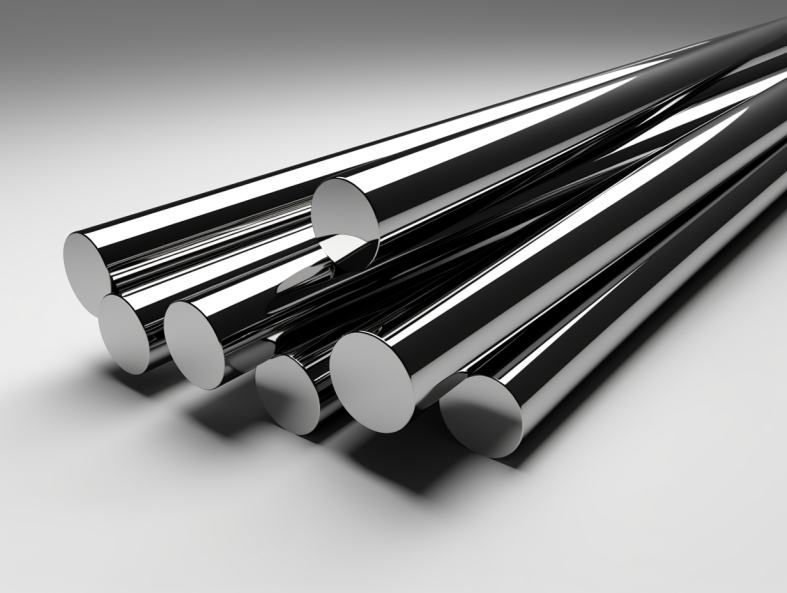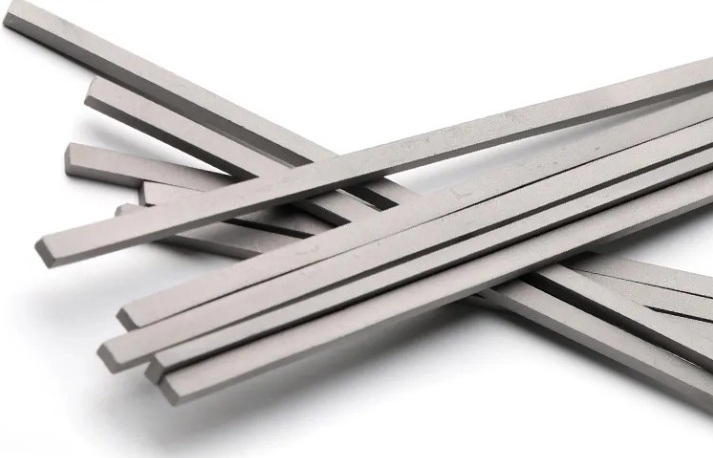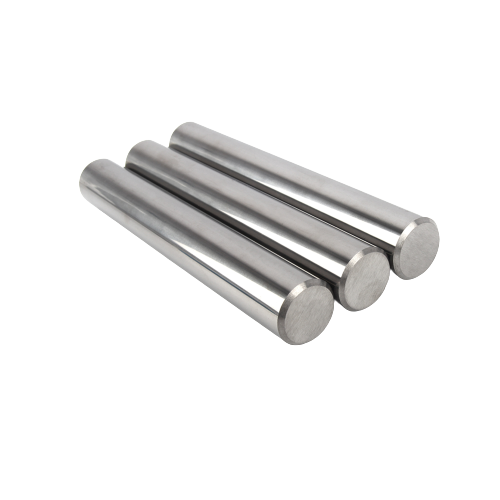In the demanding world of industrial applications, where durability and precision are paramount, carbide plates stand as champions. These engineered powerhouses, crafted from incredibly hard tungsten carbide, offer unmatched resistance to wear, heat, and corrosion, making them essential components across a multitude of industries.
This comprehensive guide explores the world of carbide plates, delving into their properties, manufacturing processes, diverse applications, and why choosing the right supplier can make all the difference in achieving peak performance.
What Makes Carbide Plates So Tough?
Carbide plates are not your ordinary metal plates. They are engineered for extreme conditions, crafted primarily from tungsten carbide, a material renowned for its exceptional hardness. This hardness, often measuring 85-95 on the Rockwell A scale (HRA), surpasses even the toughest steels, making carbide plates incredibly resistant to wear and tear.
Types and Categories
Carbide plates come in various types and categories, each designed for specific applications. Understanding these types is crucial for selecting the right plate for your needs.
Standard Carbide Plates
Standard carbide plates are used in general applications where high wear resistance and durability are required. They are available in various sizes and thicknesses to suit different needs.
Pre-Formed Carbide Plates
Pre-formed carbide plates are manufactured with specific shapes and dimensions tailored for particular applications. These plates are ideal for custom tools and machinery parts.
Coated Carbide Plates
Coated carbide plates have an additional layer of material, such as titanium nitride or diamond-like carbon, to further enhance their wear resistance and lifespan.
The Science Behind the Strength: Manufacturing Carbide Plates
The creation of carbide plates involves a fascinating blend of powder metallurgy and precision engineering:
- Powder Power: It all starts with tungsten carbide powder, typically blended with a binder metal like cobalt. This mixture is then pressed into a mold under immense pressure, forming a “green” compact.
- Sintering: The Fusion Process: The green compact is then subjected to extremely high temperatures in a controlled atmosphere furnace. This process, known as sintering, fuses the carbide particles together, resulting in an incredibly dense and solid material.
- Shaping and Machining: Once sintered, the carbide plate undergoes various machining processes like grinding, milling, and EDM (Electrical Discharge Machining) to achieve the desired dimensions, shapes, and features.
- Final Touches: Finishing for Perfection: Depending on the application, the carbide plate may undergo additional finishing processes like lapping, polishing, or coating to achieve a specific surface roughness, flatness, or enhanced properties.
Carbide Plate Properties: A Deep Dive into Durability
| Property | Description | Benefit |
|---|---|---|
| Hardness | Measured on the Rockwell A scale (HRA), typically ranging from 85 to 95 HRA. | Exceptional resistance to wear, abrasion, and deformation under pressure. |
| Compressive Strength | Can withstand extreme compressive forces, often exceeding 6000 MPa (870,000 psi). | Ideal for applications involving heavy loads and impacts. |
| Tensile Strength | While lower than compressive strength, still impressive, typically ranging from 1400-2800 MPa (200-400 ksi). | Provides resistance to breaking under tension. |
| Heat Resistance | Maintains its properties at elevated temperatures, often up to 1000°C (1832°F) or higher. | Suitable for high-temperature applications like cutting tools and wear parts in furnaces. |
| Corrosion Resistance | Highly resistant to corrosion from chemicals, acids, and other harsh environments. | Excellent for use in demanding environments, including chemical processing and marine applications. |
Table 1: Key Properties of Carbide Plates
Where Carbide Plates Shine: Applications Across Industries
The exceptional combination of properties makes carbide plates ideal for a wide range of applications:
- Metal Forming and Shaping: Dies, punches, and wear plates used in stamping, drawing, and other metal forming processes.
- Cutting and Machining: Inserts for cutting tools, saw tips, and drill bits, providing exceptional wear resistance and cutting performance.
- Material Handling: Wear liners for chutes, hoppers, and other material handling equipment, protecting surfaces from abrasion and impact.
- Oil and Gas Exploration: Downhole drilling tools, wear rings, and other components used in harsh environments requiring extreme strength and corrosion resistance.
- Construction and Mining: Wear parts for drilling equipment, crushing equipment, and other heavy machinery operating in abrasive environments.
Choosing the Right Partner: Comparing Carbide Plate Suppliers
| Supplier | Location | Price Range (per piece, approximate) | Specialties |
|---|---|---|---|
| TRUER | China | $50 – $1000+ (depending on size, complexity, and material grade) | Wide selection of carbide grades, custom geometries, rapid prototyping, competitive pricing. |
| Sandvik Coromant | Sweden | $80 – $1200+ | Advanced materials, specialized coatings, focus on tooling solutions. |
| Kennametal | US | $70 – $1100+ | High-performance coatings, complex geometries, expertise in wear parts. |
| Sumitomo Electric | Japan | $90 – $1300+ | High-precision machining, advanced ceramics, wide range of standard and custom sizes. |
Table 2: Comparing Carbide Plate Suppliers
Weighing the Pros and Cons: Advantages and Disadvantages
| Advantages | Disadvantages |
|---|---|
| Exceptional Hardness and Wear Resistance | Higher Cost Compared to Other Materials |
| High Compressive and Tensile Strength | Brittleness Under Impact |
| Excellent Heat Resistance | Difficult to Machine |
| Corrosion Resistance | Limited Flexibility |
Table 3: Advantages and Disadvantages of Carbide Plates
Beyond the Basics: Fascinating Facts about Carbide
- Tungsten’s Unique Properties: Tungsten, the key element in tungsten carbide, has the highest melting point of all elements, making it ideal for high-temperature applications.
- The Role of Cobalt: The binder metal, typically cobalt, plays a crucial role in carbide’s properties. Higher cobalt content increases toughness but slightly reduces hardness.
- Carbide Recycling: Due to the value of tungsten, carbide scrap is often recycled, contributing to sustainability.
Why TRUER Stands Out: Your Trusted Carbide Plate Partner
- Uncompromising Quality: We source only the highest quality carbide materials and employ rigorous quality control measures throughout the manufacturing process.
- Engineering Excellence: Our team of skilled engineers and state-of-the-art equipment ensure precise dimensions, tight tolerances, and exceptional surface finishes.
- Tailored Solutions: We specialize in custom carbide plates, working closely with you to understand your unique requirements and deliver tailored solutions.
- Competitive Pricing and Timely Delivery: We strive to provide competitive pricing and efficient lead times, ensuring you receive the best value and on-time delivery for your project.
- Exceptional Customer Support: Our dedicated customer support team is always available to answer your questions, provide technical assistance, and ensure a seamless experience.
FAQs: Addressing Your Carbide Plate Questions
1. How do I choose the right carbide grade for my application?
Key factors include the required hardness, toughness, wear resistance, operating temperature, and environment. Consulting with a material expert or supplier can help determine the optimal grade.
2. What is the maximum size limitation for carbide plates?
The maximum size varies depending on the supplier’s capabilities and the specific carbide grade. However, many suppliers can accommodate plates with dimensions exceeding 1 meter in length or diameter.
3. Can carbide plates be joined to other materials?
Yes, carbide plates can be joined to other materials using various techniques, including brazing, soldering, adhesive bonding, or mechanical fastening, depending on the application requirements.
4. How do I maintain and clean carbide plates?
Carbide plates are relatively easy to maintain. Regular cleaning with mild detergents or solvents can remove debris and contaminants. Avoid using abrasive cleaners or tools that could damage the surface.
5. What are the typical lead times for custom carbide plates?
Lead times vary based on factors like order complexity, size, material availability, and current production capacity. Most suppliers strive to provide competitive lead times, ranging from a few weeks to a few months.




